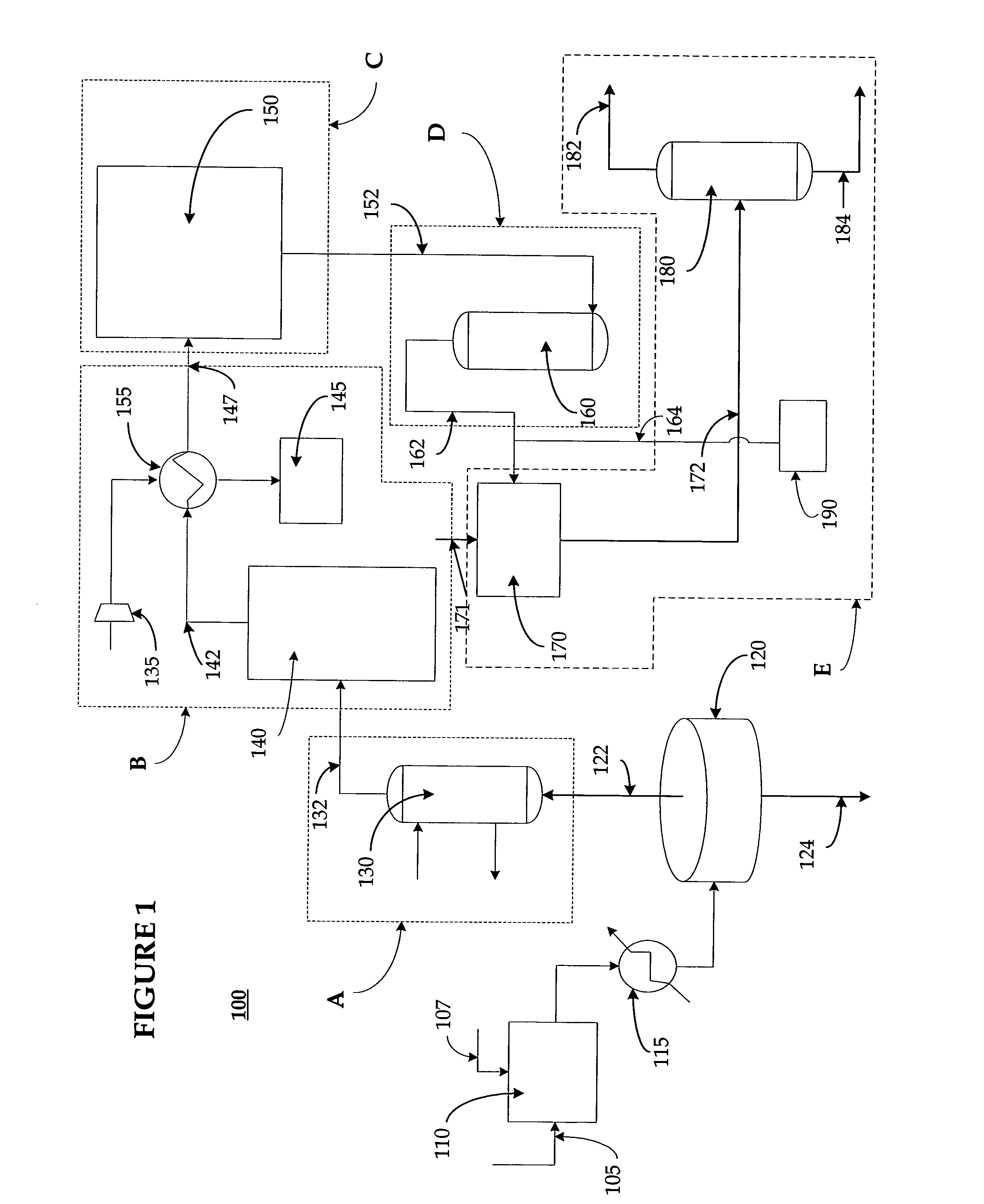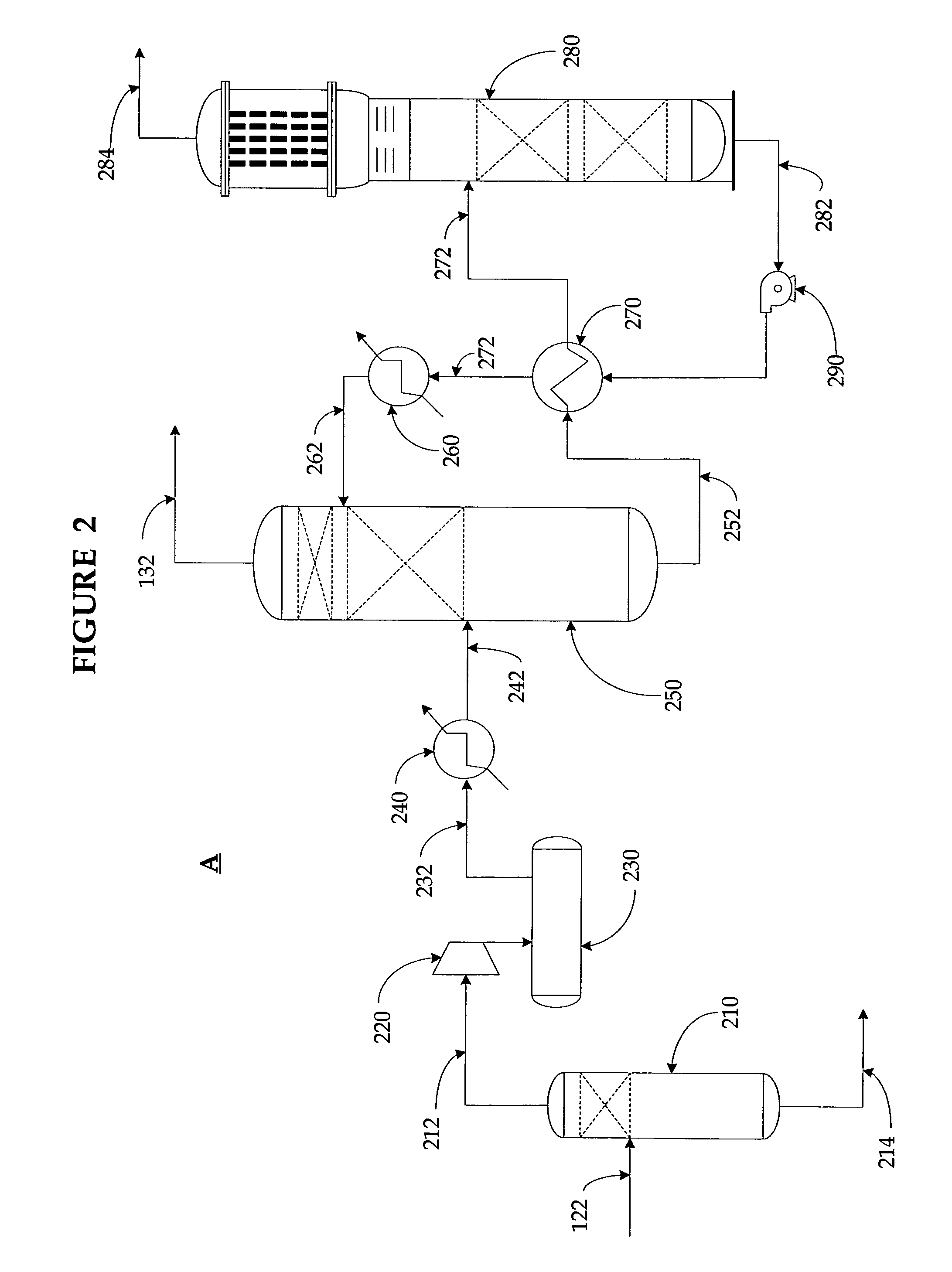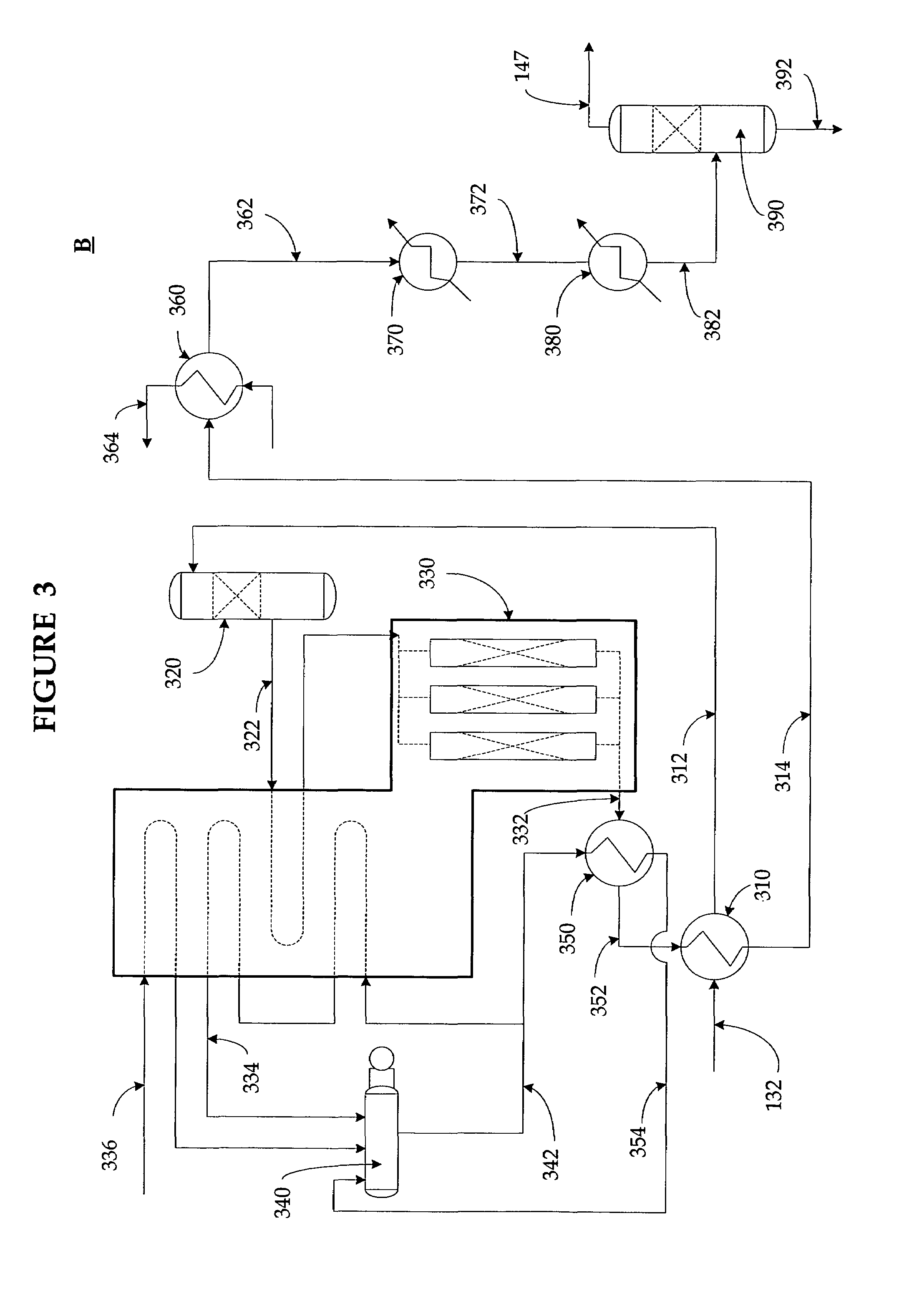System and method for extracting energy from agricultural waste
a technology of agricultural waste and energy extraction, applied in the field of system and method for extracting energy from agricultural waste, can solve the problems of pollution problems, adjacent properties suffer from both noxious odors, and endanger surrounding waterways and neighboring properties, and achieve the effects of reducing the problem of noxious odors, reducing the negative impact of concentrated farm operations on groundwater, and high strength
- Summary
- Abstract
- Description
- Claims
- Application Information
AI Technical Summary
Benefits of technology
Problems solved by technology
Method used
Image
Examples
Embodiment Construction
[0033]Throughout this description, the expression “agricultural waste” denotes in general farming waste, including animal carcasses, vegetation, animal waste, and preferably denotes animal waste in the form of animal manure. Agricultural waste typically is digested in concentrations of about 1% solids by weight, and consequently, the phrase “concentrated agricultural waste” denotes agricultural waste that has a higher solids content than conventional waste, and preferably denotes agricultural waste having greater than about 4% solids, more preferably greater than about 5% solids.
[0034]In particularly preferred embodiments the invention encompasses the conversion of the organic fraction of agricultural animal manures to alcohols by (1) initially creates biogas with constituents of approximately 65% methane (CH4) and carbon dioxide (CO2) by anaerobic digestion of high strength biosolids (>8% by volume) in a covered lagoon digester capable of capturing all of the gaseous discharge of t...
PUM
| Property | Measurement | Unit |
|---|---|---|
| retention time | aaaaa | aaaaa |
| residence time | aaaaa | aaaaa |
| hydraulic retention time | aaaaa | aaaaa |
Abstract
Description
Claims
Application Information
 Login to View More
Login to View More - R&D
- Intellectual Property
- Life Sciences
- Materials
- Tech Scout
- Unparalleled Data Quality
- Higher Quality Content
- 60% Fewer Hallucinations
Browse by: Latest US Patents, China's latest patents, Technical Efficacy Thesaurus, Application Domain, Technology Topic, Popular Technical Reports.
© 2025 PatSnap. All rights reserved.Legal|Privacy policy|Modern Slavery Act Transparency Statement|Sitemap|About US| Contact US: help@patsnap.com



